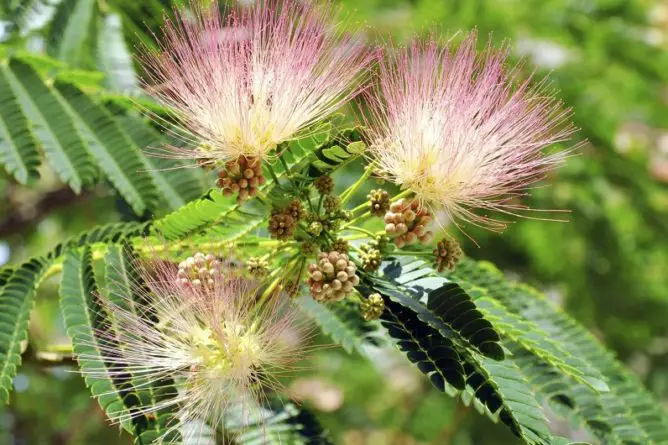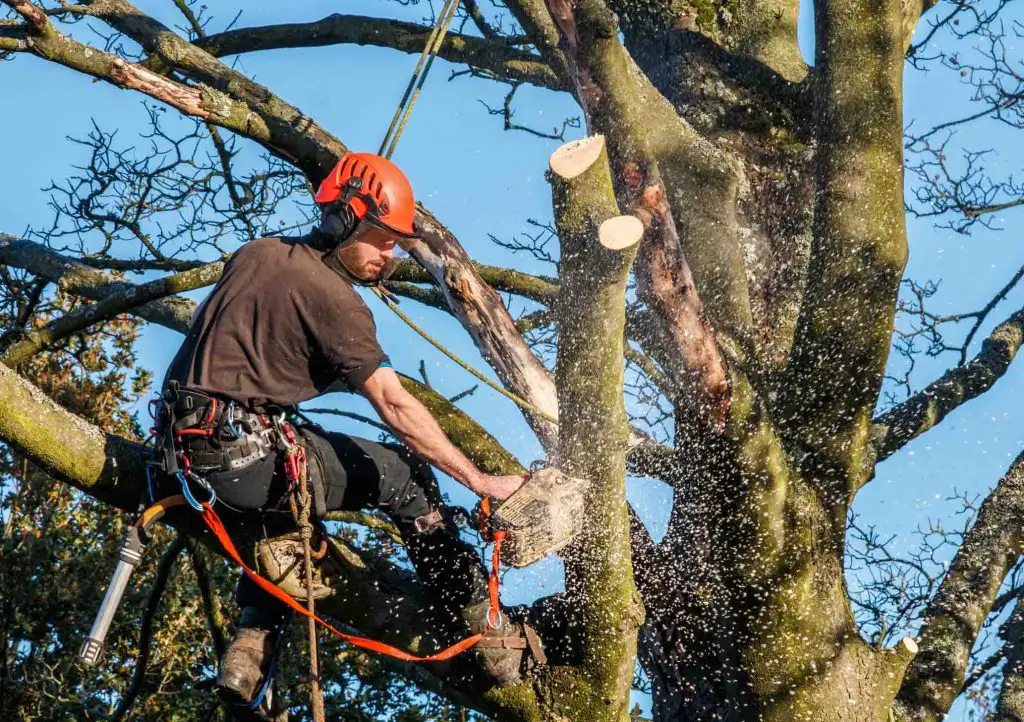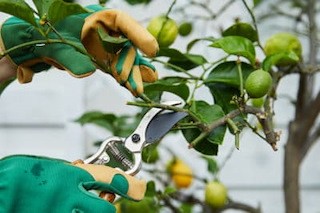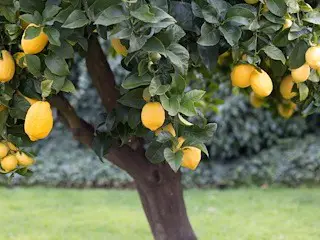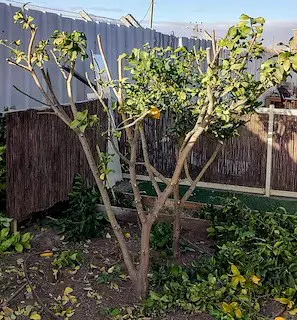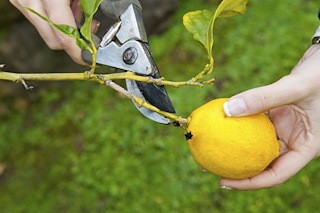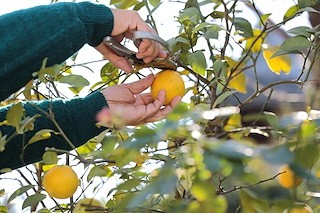The mimosa tree is a stunning sight of flower flashes, often compared to starfall or fireworks. This small to medium fast-growing mimosa tree blooms with the most beautiful pink flowers in the height of summer.
The Mimosa tree is known as the “don’t touch me” plant, which closes trees’ leaves when you touch them. Height reaches just over 20-30 feet and has an extremely invasive nature.
Let’s find out how to kill a mimosa trees and its root systems.

What is a mimosa tree?And how to get rid of mimosa trees
The pink mimosa tree pom-poms are very eye-catching. These trees started as landscape plants but have escaped cultivation and migrated to natural areas where they compete with native vegetation.
Mimosa trees appear in late spring and early summer on the tips of tree branches.
The tree rarely grows above 40 feet and its branches grow horizontally on top of the trunk. The flowers are fern-like leaves.
The tree has been imported as an ornamental plant from Asia and attracts gardeners with its fragrant and beautiful flowers. However, the maintenance of mimosa trees proved to be more difficult than expected.
The trees produce thousands of seeds every year. Since seeds require scarification, they can remain in the soil for many years and remain viable. Seedlings are often weak and weedy, sometimes referred to as weeds.
The Mimosa tree also reproduces vegetatively. The tree produces shoots around it that can grow into unsightly tangles that are difficult to eradicate.
It is also challenging to get rid of a mimosa tree after it has grown. Also, plants are not at all afraid of either hot or dry weather.
The only force of nature that effectively gets rid of seedlings is cold. A good frost can destroy it, so in the north, you rarely see weeds or trees growing along the sides of the roads.
How to kill a mimosa trees
The best way to control trees is not to plant them in your yard, or if you have already planted the tree, remove them before they sprout.
Here are some of the most popular methods to kill a mimosa tree:
Mimosa tree cutting
Cutting down mimosa trees at ground level is an effective way, but the trunks will grow back. Re-pruning or herbicide treatment is required to prevent re-emergence.
You can cut down a mimosa tree with a chainsaw or chop down the tree with an ax and be sure to treat the stump with herbicide. Using a strong herbicide will kill a mimosa tree.
Girdling
Girdling is also an effective way to get rid of mimosa trees by removing the outer branches. It is necessary to cut off a tree’s bark about 6 inches above the ground level. You need to cut deep. This method will kill the top of the tree, but sprouts often appear and subsequent treatment with a foliar herbicide may be required.

Foliar spraying with systemic herbicides
You can also take control of a mimosa tree by spraying the leaves with systemic herbicides.
Only applicable if the foliage of the mimosa tree is within reach of the sprayer. For this method, you will need a backpack sprayer and an herbicide. Spray the entire tree, including the trunk, branches, and foliage and you can kill a mimosa tree.
Follow the rules of Foliar Spraying :
- Wear protective gear when using this method.
- Make sure there is no wind when doing this as the herbicide will spread. The leaves of the mimosa tree must be dry before spraying the herbicide to maximize uptake.
- After spraying the foliage with herbicide on the tree, the procedure must be repeated. Because the tree has an invasive nature, it will take several coats of herbicide to kill a mimosa tree.
The herbicide will be absorbed by the leaves of the tree and transported to the roots and kill a mimosa tree over time.
Attention! Any advice regarding chemicals is for informational purposes only. Chemical processes should only be used as a last resort, as biological approaches are safer and more environmentally friendly.
Basal bark treatment
Suitable: if the diameter of the trunk is less than 6-7 centimeters.
For this method, you will need a chemical sprayer, a strong herbicide, and an oil-based solvent.
Ideally, herbicides containing triclopyr or an ester of triclopyr as the main chemical should be selected, or herbicides based on imazapyr should be used.
The solvent for mixing the herbicide can be diesel, basal oil, fuel oil, or kerosene. The ideal mixing ratio is 1 part herbicide to 4 parts solvent, i.e. concentration is about 20-25%.
The treatment process of the basal cortex
- Spray the bottom 20 inches of the mimosa tree with this solution and let it dry.
- Then you need to repeat this process.
Make sure the wood is not wet when doing this technique, as the chemicals are hydrophobic, which means they won’t be absorbed as effectively.
Chemical injection
Suitable: if the diameter is over 7 inches.
For this method, you will need a drill and herbicide.
Chemical injection process:
- Drill holes 2-3 inches deep around the circumference of the tree about 2-3 feet above the ground.
- Make the hole angle down.
- Apply a strong herbicide to these holes and let it soak in.
- Repeat the process after about an hour. Add more herbicides to increase the effectiveness of this method.
If the tree has multiple trunks, drill holes and apply herbicide to each one.

Reasons why you should not buy a silk tree (Mimosa trees)
First, like most fast-growing trees, mimosa is notoriously short-lived, prone to a variety of pests, and can die quickly.
Second, after the flowers have faded, the tree will grow hundreds of bean-shaped brown pods 6 inches long that hang from each branch.
The seed pods persist throughout the winter, even after the tree has shed its leaves.
Few trees look as ugly or more abandoned.
Each of these pods is filled with seeds, and each of them germinates somewhere, even in cracks in the pavement. Plant one mimosa in your yard, and soon every house in your neighborhood will have two or three mimosas.
Mimosa adapts to almost any well-drained ground and conditions. That’s why you see it growing on almost every highway and country road in the South.
Problems and care of a mimosa tree
If you still decide to grow mimosa, you may encounter some problems such as the following.
Spider worms are a common problem on these trees. The silk web wraps the tufts of leaves together, and the caterpillars inside this web eat the leaves.
Solution: if possible, cut and destroy cobwebs and damaged leaves.
Spray the tree trunk thoroughly with garden oil in early March to kill the pupating larvae.
Another problem you may encounter when growing mimosa is wilting. The leaves turn yellow and fall from early to mid-summer. Tree branches die within a few months.
Solution: remove the infected trees and not plant new mimosas in the same place.

FAQs
What will kill mimosa?
Glyphosate and triclopyr are the most effective options to kill a mimosa, but they must be mixed with a non-ionic surfactant to successfully penetrate the leaves. Use herbicides carefully, as they will kill other plants in the immediate area.
Do mimosa trees have invasive roots?
The root system of mimosas has an invasive nature. The root system spreads widely, releasing shoots far from the original tree, forming thickets in some places.
How deep are mimosa tree roots?
Mimosas have shallow roots that grow only 2 feet deep.
Should I cut down my mimosa tree?
If you want to prune your mimosa and control its growth, prune it after flowering, but no later than late summer, as next year’s flowers develop in autumn. You can also find frost-damaged shoots in winter, lightly prune them back to living wood.
Can you cut the top off a mimosa tree?
If you want to trim the top of the mimosa, it should be trimmed after flowering. It is not recommended how to cutting tree branches strongly, otherwise, the mimosa may die.
Can you plant a mimosa tree close to the house?
When planting a mimosa plant, keep it at least 10 to 20 feet away from your home or structure. Trees will grow in conditions from full sun to partial shade.
Conclusion
Trees are very beautiful to any landscape. The powerful root system of the tree is capable of lifting and splitting concrete if it is planted too close to sidewalks or roadways.
You can kill mimosa trees by different methods.
A small tree, less than 10 feet, can be destroyed using the leaf spray method. Also, young mimosas are much easier to kill than mature trees.
Unwanted seedlings scattered by wind or animals can be removed by uprooting the entire plant once it is large enough to grab.
You can use a basal bark treatment or a chemical injection method for larger trees to kill a mimosa.
Alternatively, you can also cut down the tree and treat the remaining stump with herbicide.

